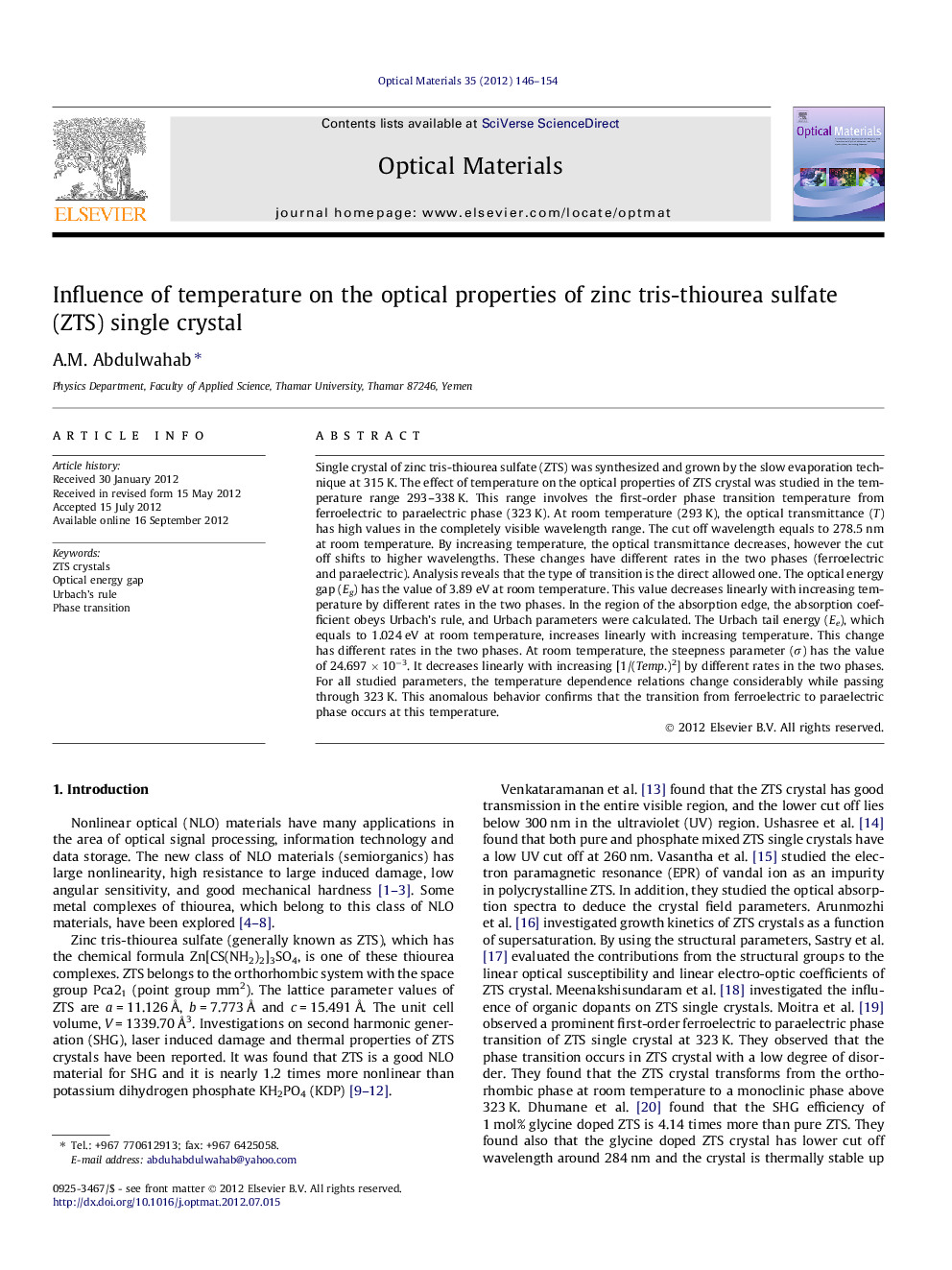| Article ID | Journal | Published Year | Pages | File Type |
|---|---|---|---|---|
| 1495075 | Optical Materials | 2012 | 9 Pages |
Single crystal of zinc tris-thiourea sulfate (ZTS) was synthesized and grown by the slow evaporation technique at 315 K. The effect of temperature on the optical properties of ZTS crystal was studied in the temperature range 293–338 K. This range involves the first-order phase transition temperature from ferroelectric to paraelectric phase (323 K). At room temperature (293 K), the optical transmittance (T) has high values in the completely visible wavelength range. The cut off wavelength equals to 278.5 nm at room temperature. By increasing temperature, the optical transmittance decreases, however the cut off shifts to higher wavelengths. These changes have different rates in the two phases (ferroelectric and paraelectric). Analysis reveals that the type of transition is the direct allowed one. The optical energy gap (Eg) has the value of 3.89 eV at room temperature. This value decreases linearly with increasing temperature by different rates in the two phases. In the region of the absorption edge, the absorption coefficient obeys Urbach’s rule, and Urbach parameters were calculated. The Urbach tail energy (Ee), which equals to 1.024 eV at room temperature, increases linearly with increasing temperature. This change has different rates in the two phases. At room temperature, the steepness parameter (σ) has the value of 24.697 × 10−3. It decreases linearly with increasing [1/(Temp.)2] by different rates in the two phases. For all studied parameters, the temperature dependence relations change considerably while passing through 323 K. This anomalous behavior confirms that the transition from ferroelectric to paraelectric phase occurs at this temperature.
► I study the effect of temperature on the optical properties of ZTS single crystal. ► Increasing temperature will decrease the optical energy gap. ► In the region of absorption edge, the absorption coefficient obeys Urbach’s rule. ► Increasing temperature will increase the Urbach tail energy. ► Temperature dependence relations have anomalies at the phase transition (323 K).
